I found an article a long time ago and decided to post it. many either ask or argue when I bring in data. I publish here so that there are no unnecessary questions.
The main question in this article is whether driving at low revs leads to premature engine wear? And what modes are the most "wear-forming" ...
The setting of the expert tests is, in general, clear. The engine is one and the same: VAZ "eight-valve". The stand, equipment, gasoline and several cans of oil - each test cycle requires its replacement. The task is simple - you need to "drive" the same distance, at the same speed, but using different modes of engine operation. In different gears ...
How can this be achieved? You can ride at the same speed, maintaining the engine speed at 1500, 2500, and even 4000 rpm. The higher the rpm, the lower the gear, it is important that the power delivered by the motor is the same. It is easy to do this at the stand - we measure the torque using a dynamometer, the revolutions are known - therefore, we also know the power. We multiply the "speed" by the engine hours, which we also record - here is the mileage for you.
With wear it is more difficult - every time, after the engine has been operating in a fixed mode of a given time, the motor will have to be disassembled and weighed the main parts that form friction units, these are bearing shells and piston rings. Plus, there is an additional intermediate control, which will be carried out by determining the content of wear products in oil samples. Found chrome - therefore, the first piston rings wear out; found iron - cylinders and shaft journals; tin appeared - it will determine the wear rate of the bearing shells (since it is part of the antifriction layer); aluminum is a result of wear on pistons and camshaft bearings.
The engine worked at preset constant modes with approximately the same power, 50 hours each. A little for the resource, but we get the wear rates, and then, by simple extrapolation, we estimate the approximate resource of the motor. At the same time, the engine speed during the test cycles was changed from 1200 to 4000, that is, more than three times. And then the load on the motor was increased - and the cycle was run again. And then - more ... It turned out a voluminous table, where for each point of the mode was recorded its own wear rate, and divided into nodes - bearings and rings.
This is how the average wear rate of the first piston rings engine when changing the operating mode
"Black zones" of active wear were revealed immediately. The most serious ones are when a large load is imposed at low speeds, and with a high oil temperature. The wear rate in this mode is maximum - both for bearings and piston rings with cylinders. Engineers call this area the towing zone.
With an increase in revolutions, the wear zone immediately began to decrease and somewhere at 1800 rpm it disappeared. All friction units “floated up” onto oil films, direct contact between the surfaces of the parts disappeared - and with it, the wear rate turned almost to zero. But you need to understand that zero wear rate on the graphs does not mean that it does not exist, just wear in these modes is less than the measurement error. In practice, of course, this is not entirely true. Microparticles of dust, wear products, soot, slipped through oil filter, will give some wear and tear here too.
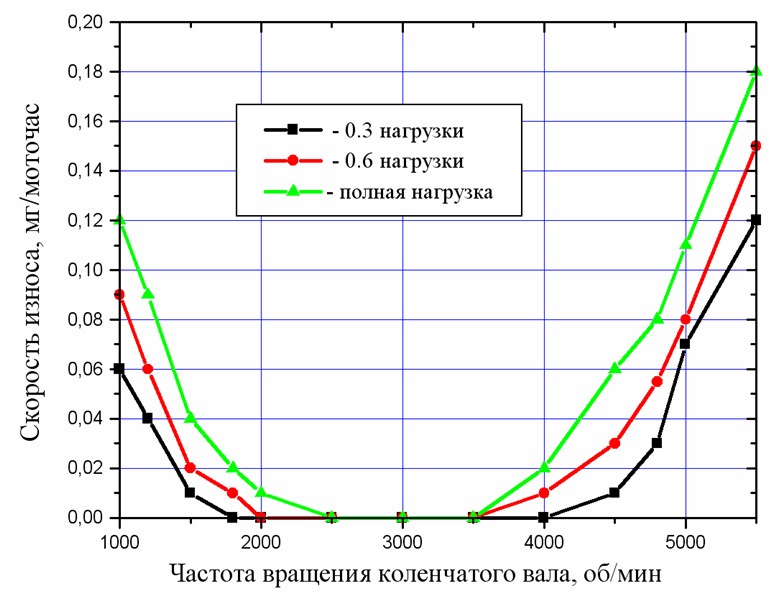
And so - connecting rod bearing shells
With increasing speed crankshaft, the wear zone starts to appear and grow again. In our case - already somewhere from 3800 rpm modes under heavy load, and further - it progresses. Moreover, here the wear of bearings and piston rings with cylinders behaves differently. The crankshaft bearings begin to feel the high revs most quickly. Why? The fact is that with an increase in speed, the load on the bearings increases sharply - the pressure of inertial forces depends on the speed in a square. But the rings get their wear again at high speeds - somewhere from 4500 rpm, and there this is mainly due to an increase in the oil temperature.
Where is the most favorable area for the operation of the motor? In the VAZ "eights" we tested (it does not matter, carburetor or injection, eight- or sixteen-valve), the zone of optimal speed at which the engine is able to take any load without any damage to itself is about 2000 ... 3000 rpm. Here we take into account that the initial state of the engine may be different, and engine oils- too ... The principle is simple - the more worn out the engine, the higher the lower and the lower the upper limits of the zones of no-wear operation. The higher the viscosity of the oil, the lower the speed the engine can be safely loaded. But there are no exact numbers - it is very individual.
How does this compare with motors of other dimensions? There is one clue ... In principle, the friction units of the motor do not feel the speed, but the linear speeds of movement of the surfaces of the parts. There is such a parameter of the motor - the average speed of the piston, this is the product of the piston stroke by the crankshaft speed divided by thirty. The range that we received corresponds approximately to the average piston speeds of 5 ... 7 m / s. This means that for "long-stroke" engines, whose piston stroke is larger than the diameter, the zone of optimal modes will shift to the region of lower rpm. Hence - and their "elasticity". In the case of "short-travel" ones, the zone of optimal modes will shift to the area of higher rpm.
By the way, it is this range of variation of the average piston speeds that is usually laid down to determine the main areas of operation of engines with large resources. Marine diesels, diesel generators, etc.
So - take your dimension, perform elementary actions, and approximately get your range of safe revolutions. But this is so, approximately ...
In general, the conclusion is clear. Both low-speed modes with heavy loads and extreme rpm are harmful to the motor. Alexander Shabanov
Many drivers (both beginners and experienced) often ask the question - what rpm is better to drive? Since the opinions of supporters of different driving styles differ significantly, in this article we will try to determine the only correct driving style that will help keep the engine for long kilometers before it overhaul.

The first and foremost rule of economy driving is to avoid dynamic acceleration and high speeds. In order not to burn fuel in vain, you should get used to a measured set of speed and "stimulate" the engine to work more in economy mode - at 2000-3000 rpm, when the specific fuel consumption of most engines is minimal.
When accelerating, you should press the gas pedal as gently as possible. Any sharp swirling is not recommended - it is necessary to maintain a constant speed on the track. To engage the next gear, you do not need to spin the engine up to high revs - it is enough to switch at optimal (medium) revs. To reduce fuel consumption when decelerating, it is necessary to move in higher gears for as long as possible.
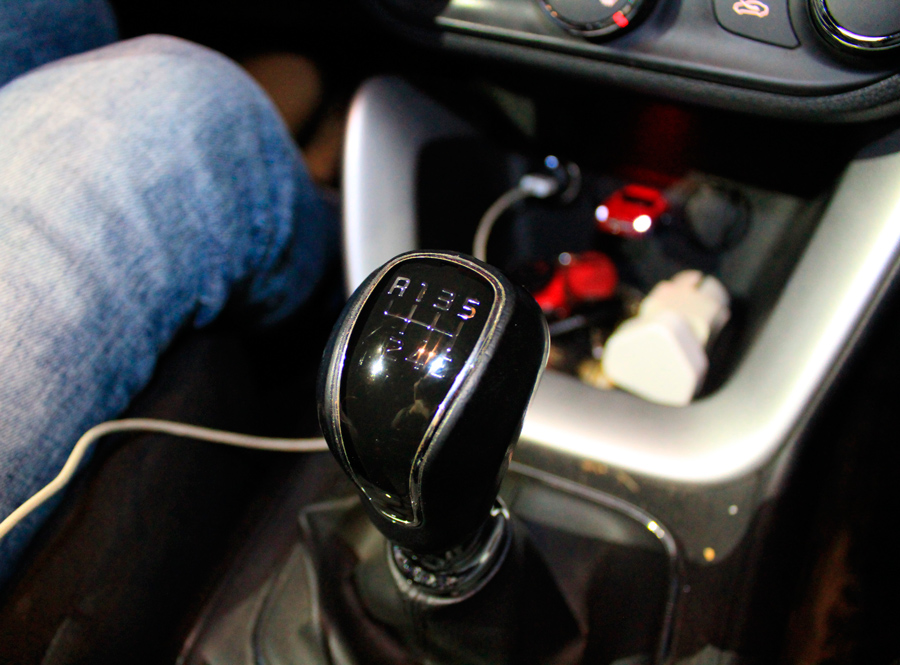
It is better to move in the city avoiding vehicle stops. Starting off is the most uneconomical mode of movement, which should be avoided whenever possible.
Remember that the engine in warm-up mode consumes twice as much fuel as at operating temperature. Therefore, it is better to reduce the warm-up time of the power unit by standing car- it is advisable to start moving as soon as possible after starting.
However, it is necessary to apply the rules of economical driving wisely, in order to avoid interfering with other road users.

Low engine rpm, negative driving torques at low rpm
There are two types of internal combustion engines:
- Slow (for example, Moskvich 2141).
- High-speed (from classics to Grants or Priors).
The first version of the engine is low-speed. It is designed not to spin the motor to achieve high speed, but to pull. Slow-speed internal combustion engines are similar to diesel types. The maximum torque (for the petrol type) is achieved at low revs (about 2500 rpm).
For high-revving powertrains, peak torque is reached in the 3500-4500 rpm range. Thus, vehicle pulls better at high revs.

When operating a high-speed type of motor at low speeds, the following occurs:
- Oil starvation. At low rpm, the oil pump delivers oil at a low level when the bearings (crankshaft liners) are under heavy load. As a result low pressure oils, rubbing elements of the motor are poorly lubricated, as a result of which they begin to rub against each other, which leads to overheating and seizure of key engine mechanisms.
- Carbon deposits form in the combustion chamber. Fuel does not burn completely, nozzles and spark plugs are clogged.
- The camshaft is under load. The piston fingers begin to knock.
- Detonation occurs, that is, the fuel explodes earlier than necessary (self-ignition), an increase in the load on piston group... The motor heats up and twitches more.
- There is an increase in the load on the transmission. The gearbox is poorly lubricated and is forced to work under load, as a result of driving "vnatyag".
- Poor throttle response on the road. When a dangerous situation arises, it will be unrealistically fast to accelerate.
- Fuel consumption increases. To accelerate at low speeds, it is necessary to press the gas pedal much harder than when the engine would have been spun, therefore, an additional enrichment of the mixture occurs and high consumption fuel.
High engine speed, negative moments when driving at speeds above 4500 rpm
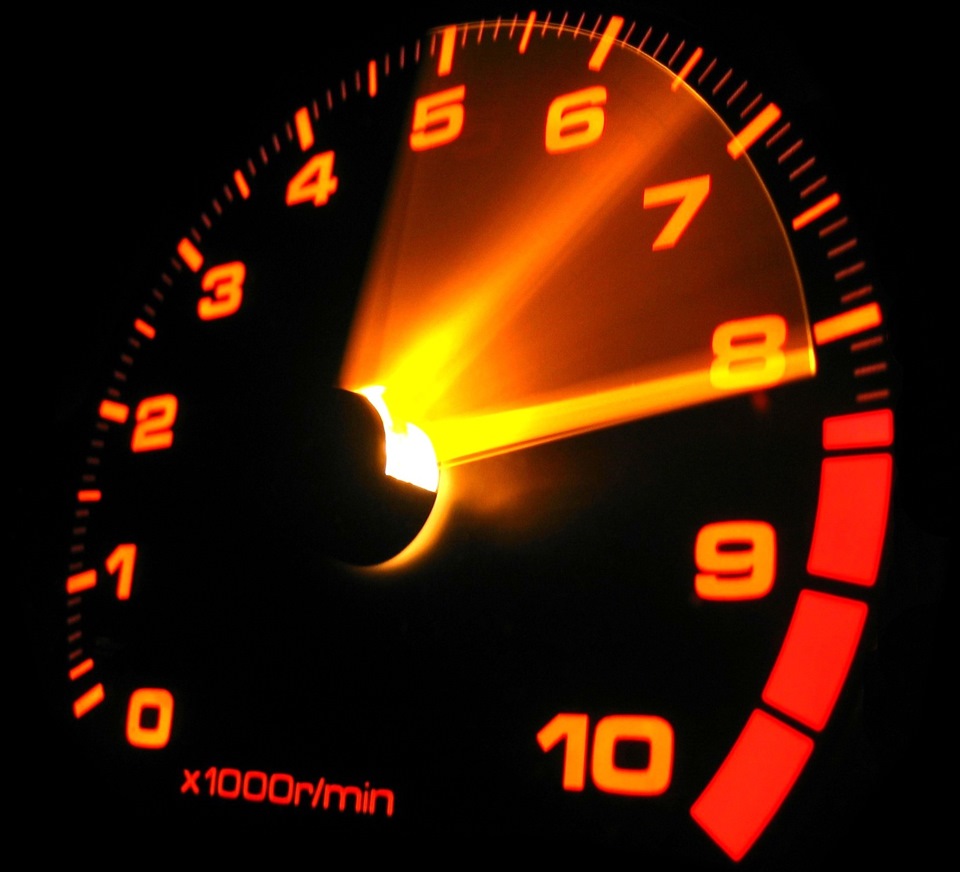
Many drivers, having learned about the disadvantages of driving at low speeds, are of the opinion that it is necessary to drive only at high speeds, that is, with an engine speed of more than 4500 per minute. This mode of operation of the power unit also has several disadvantages:
- With constant movement at high speeds, the lubrication systems of the engine elements and its cooling are forced to work without reserve, as a result of which even a faulty thermostat or a radiator clogged from the outside can cause off-scale engine temperature readings.
- When driving at high speeds, the lubrication channels become clogged quite quickly, which, together with the use of low-quality oil (and high-quality lubricant few people use it), leads to a "sticking" of the bushings, which in the future can lead to failure of the camshaft.
What rpm to drive, or optimal engine rpm
Experts in the automotive field agree that the optimal mode for the operation of any "engine" is the speed mode 0.35-0.75 of the maximum number of revolutions for a given motor - it is when driving in this mode that the motor will produce the best indicators of wear resistance. If the car has just been purchased, that is, it is being run-in, you do not need to accelerate the engine by more than 0.65 from the maximum speed of the power unit.

Driving performance at medium speed (2800-4500 rpm)
The main driving factors at medium revs:
- The fuel burns out completely; carbon deposits do not form in the cylinders.
- The accelerator pedal is pressed less, therefore, the fuel consumption is also lower.
- You can pick up speed easily.
- The motor runs without loads.
To keep the engine in "shape", spinning it up to maximum speed is sometimes useful for self-cleaning from carbon deposits in the cylinders.
Pro tips on what to look for when driving and what it means to hear the engine
Riding at medium revs is most acceptable. In general, you need to hear the engine and feel the thrust. If the gas pedal is released and you go down the hill, then the rpm 1500-2000 is not harmful, since the engine does not work "vnatyag".
13 September 2017The operating mode of the engine is one of the main factors affecting the rate of wear of its parts. It's good when the car is equipped automatic transmission either a variator that independently chooses the moment of transition to a higher or low gear... On cars with "mechanics", the driver is engaged in switching, who "spins" the engine according to his own understanding and is not always correct. Therefore, motorists without experience should study at what speed it is better to drive in order to maximize the life of the power unit.
Driving at low revs with early shifting
Often, driving school instructors and old drivers recommend that beginners drive "tightly" - shift to top gear when the crankshaft reaches 1500–2000 rpm. The first give advice for safety reasons, the second - out of habit, because earlier the cars had low-speed motors. Now such a mode is suitable only for a diesel engine, whose maximum torque is in a wider rpm range than that of a gasoline engine.
Not all cars are equipped with tachometers, so inexperienced drivers with this driving style should be guided by the speed of movement. The mode with early switching looks like this: 1st gear - moving from a standstill, transition to II - 10 km / h, III - 30 km / h, IV - 40 km / h, V - 50 km / h.
This shifting algorithm is a sign of a very relaxed driving style, which gives an undoubted advantage in safety. The downside is in increasing the wear rate of power unit parts and here's why:
- The oil pump reaches its rated capacity starting at 2500 rpm. Load at 1500-1800 rpm causes oil starvation, connecting rod plain bearings (liners) and compression piston rings are especially affected.
- The conditions for the combustion of the air-fuel mixture are far from favorable. Carbon deposits are heavily deposited in chambers, valve plates and piston crowns. During operation, this soot heats up and ignites the fuel without a spark on the spark plug (knocking effect).
- If you need to sharply increase the engine speed while driving from the very bottom, you press the accelerator, but acceleration remains sluggish until the engine reaches its torque. But as soon as that happens, you shift into top gear and the crankshaft speed drops again. The load is large, there is not enough lubrication, the pump does not pump enough antifreeze, hence overheating occurs.
- Contrary to popular belief, there is no fuel economy in this mode. When you press the gas pedal, the fuel mixture is enriched, but does not burn completely, which means it is wasted.
For car owners equipped with on-board computer, it is easy to be convinced of uneconomic movement "in tightness". It is enough to turn on the display of the instantaneous fuel consumption on the display.
 Driving like this wears out power unit when the vehicle is operated in difficult conditions - on dirt and country roads, with a full load or with a trailer. Owners of cars with powerful engines of 3 liters or more, capable of sharply accelerating from the bottom, should not relax either. Indeed, for intensive lubrication of rubbing engine parts, you need to keep at least 2000 rpm of the crankshaft.
Driving like this wears out power unit when the vehicle is operated in difficult conditions - on dirt and country roads, with a full load or with a trailer. Owners of cars with powerful engines of 3 liters or more, capable of sharply accelerating from the bottom, should not relax either. Indeed, for intensive lubrication of rubbing engine parts, you need to keep at least 2000 rpm of the crankshaft.
Why is high crankshaft speed harmful?
The manner of driving "a slipper to the floor" implies constant unwinding of the crankshaft up to 5-8 thousand revolutions per minute and later gear shifting, when the noise of the engine literally rings in your ears. What this driving style is fraught with, in addition to creating accidents on the road:
- all components and assemblies of the car, and not only the engine, experience maximum loads during the service life, which reduces the total resource by 15–20%;
- due to intensive heating of the engine, the slightest failure of the cooling system leads to overhaul due to overheating;
- exhaust pipes burn out much faster, and with them - an expensive catalyst;
- transmission elements wear out;
- since the crankshaft rotational speed exceeds the normal rpm, if not double, the fuel consumption also doubles.
Exploitation of the car “at a break” has an additional negative effect associated with the quality of the road surface. Driving at high speed on uneven roads literally kills the suspension elements, and in no time. It is enough to fly the wheel into a deep pothole - and the A-pillar will bend or crack.
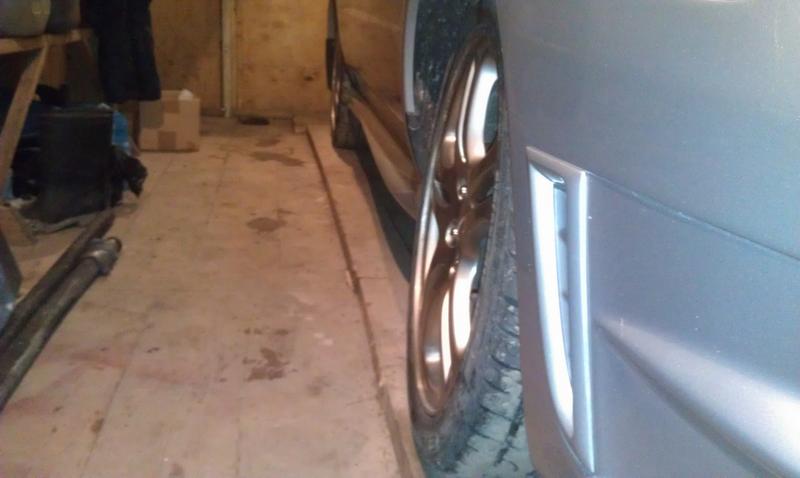
How to ride correctly?
If you are not a race car driver and not an adherent of "pull-back" driving, who finds it difficult to retrain and change driving style, then in order to save the power unit and the car as a whole, try to keep the engine operating speed in the range of 2000–4500 rpm. What bonuses will you get:
- The mileage before the overhaul of the engine will increase (the full resource depends on the brand of the car and the power of the engine).
- By optimizing the combustion of the air / fuel mixture, you can save fuel.
- Fast acceleration is available at any time, as soon as you press the accelerator pedal. If there is not enough revolutions, shift down on the move. Repeat the same steps when driving uphill.
- The cooling system will function in working mode and will save the power unit from overheating.
- Accordingly, the suspension and transmission elements will last longer.
Recommendation. Most modern cars equipped with high-speed gasoline engines, it is better to switch gears when the threshold of 3000 ± 200 rpm is reached. This also applies to the transition from high to low speed.
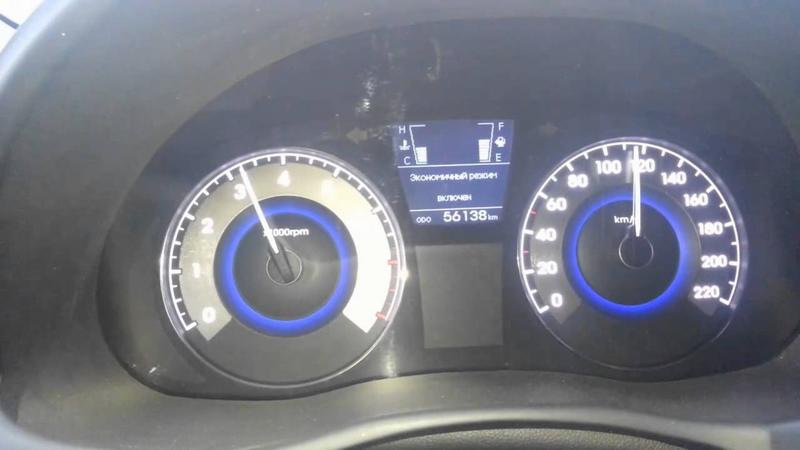 As stated above, dashboards cars do not always have tachometers. For drivers with a short driving experience, this is a problem, since the crankshaft speed is unknown, and the beginner does not know how to navigate by sound. There are 2 options for resolving the issue: buy and install an electronic tachometer on the dashboard, or use a table that shows the optimal engine speed in relation to the speed of movement in different gears.
As stated above, dashboards cars do not always have tachometers. For drivers with a short driving experience, this is a problem, since the crankshaft speed is unknown, and the beginner does not know how to navigate by sound. There are 2 options for resolving the issue: buy and install an electronic tachometer on the dashboard, or use a table that shows the optimal engine speed in relation to the speed of movement in different gears.
| 5-speed gearbox position | 1 | 2 | 3 | 4 | 5 |
| Optimum crankshaft rotation speed, rpm | 3200–4000 | 3500–4000 | not less than 3000 | > 2700 | > 2500 |
| Approximate vehicle speed, km / h | 0–20 | 20–40 | 40–70 | 70–90 | more than 90 |
Note. Considering that different brands and modifications of machines different correspondence of the speed of movement and the number of revolutions, the table shows averaged indicators.
A few words about coasting from a mountain or after acceleration. In any fuel supply system, a forced mode is provided. idle move, which is activated under certain conditions: the car is coasting, one of the gears is engaged, and the crankshaft speed does not fall below 1700 rpm. When the mode is activated, the supply of petrol to the cylinders is blocked. So you can safely brake the engine at high speed without fear of wasting fuel.


